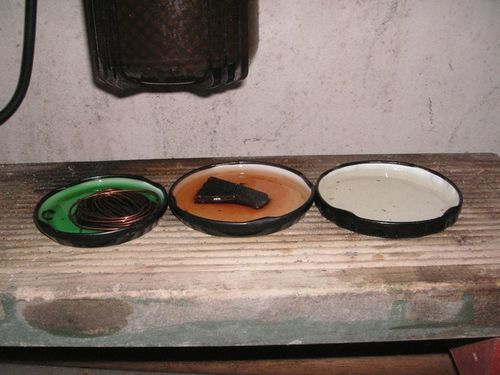The wiki page seem to have rather died a death, but I've still got my samples sitting outside under cover.
This is how they looked in July last year ...

The colours have deepened dramatically, but the viscosity of each is interesting.
In an overnight ambient of -1°C the plain bio sample is a lot more viscous but will still pour, the iron sample is solid and very firm, but the copper sample is only a little more viscous than at the start.
Bio in my storage tank below the samples looks quite normal.
The chemistry is beyond me but the marked difference between the three is quite puzzling.